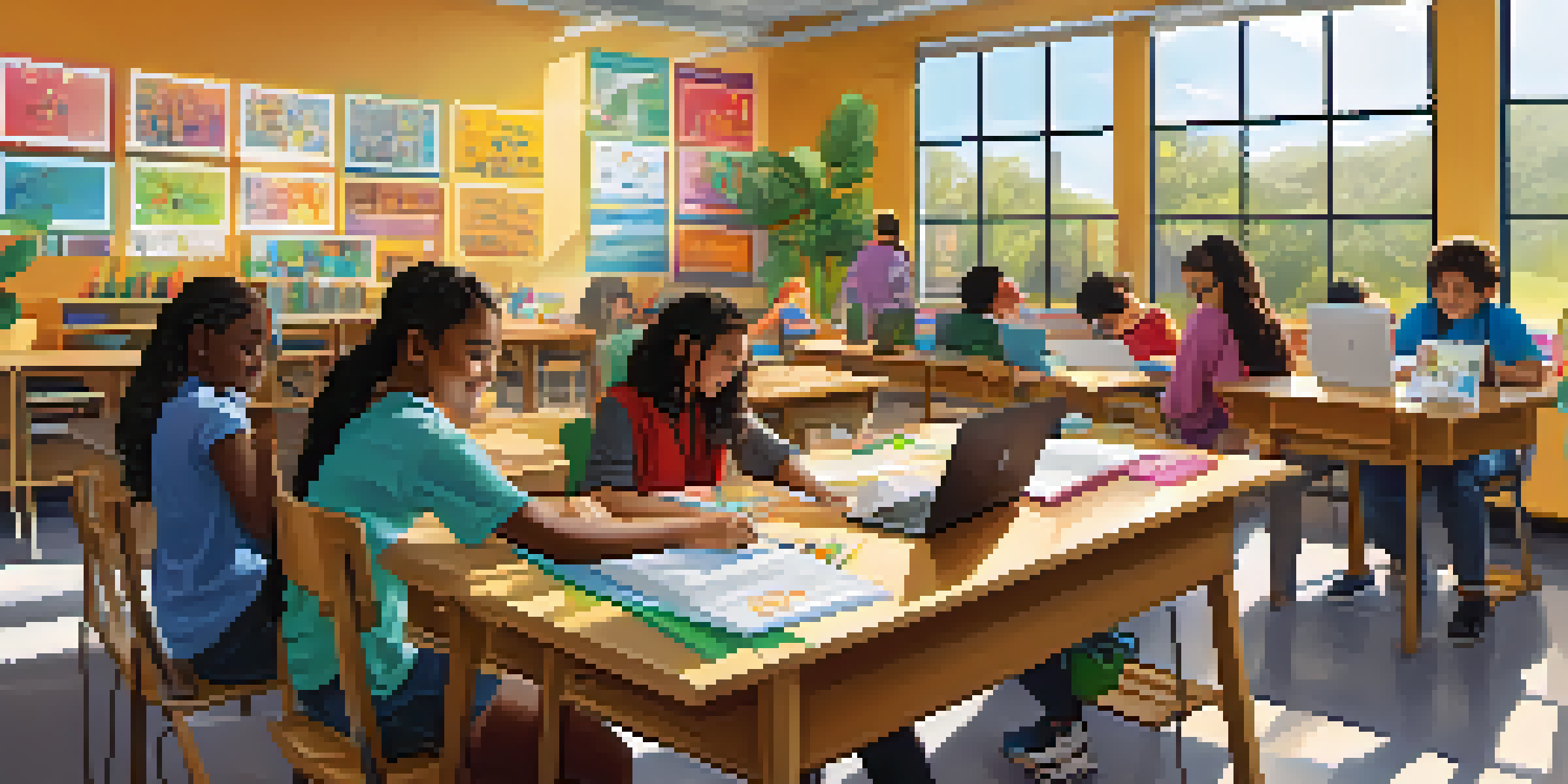Creating Flexible Learning Pathways for Diverse Learners

Understanding the Importance of Flexible Learning Pathways
Flexible learning pathways are crucial for accommodating diverse learners. Every student comes from a unique background, with different strengths and challenges. By creating adaptable educational routes, we can ensure that all learners have the opportunity to thrive.
Education is not the filling of a pail, but the lighting of a fire.
This approach recognizes that one size does not fit all. Just like a tailor-made suit fits better than one off the rack, personalized learning pathways can lead to more effective educational experiences. When students see their individual needs being met, they are more likely to engage and succeed.
Ultimately, the goal is to foster an inclusive environment. By understanding the importance of these flexible pathways, educators can design systems that truly support every learner’s journey.
Identifying Diverse Learner Needs in Your Classroom
To create effective flexible learning pathways, it's essential to first understand the diverse needs of your learners. This can involve assessing their learning styles, interests, and any challenges they may face. Gathering this information helps to build a comprehensive picture of each student.

A great way to collect this data is through surveys or one-on-one conversations. For example, asking students how they prefer to learn—whether through videos, hands-on activities, or reading—can provide invaluable insights. The more you know about your students, the better you can tailor your approach.
Remember, diversity in learning goes beyond just academic ability. It encompasses cultural backgrounds, languages spoken, and even emotional needs. By recognizing and addressing these factors, you can create pathways that truly resonate with every learner.
Utilizing Technology to Enhance Learning Pathways
Technology plays a vital role in facilitating flexible learning pathways. Digital tools can provide personalized resources and track student progress in real time. For instance, learning management systems allow educators to tailor assignments based on individual student needs.
The only way to discover the limits of the possible is to go beyond them into the impossible.
Moreover, technology can bridge gaps for students who may need additional support. Online tutorials, interactive simulations, and educational apps can cater to various learning preferences. This not only enhances engagement but also gives students control over their learning journey.
However, it's important to ensure that all learners have access to the necessary technology. Equity in access is key to making sure that every student can benefit from these digital resources. By addressing this issue, educators can create a more inclusive learning environment.
Designing Curriculum That Supports Multiple Pathways
Creating a curriculum that supports various learning pathways involves intentional planning. This means developing content that can be approached in multiple ways, allowing students to choose what resonates most with them. For example, offering projects that can be completed through writing, art, or presentations gives learners options.
Flexibility in assessment is also essential. Traditional testing methods may not accurately reflect a student's understanding. By incorporating alternative assessments—like portfolios or presentations—educators can gauge knowledge in a way that suits diverse learners.
Ultimately, a well-designed curriculum invites exploration and creativity. When students have the freedom to engage with material in their preferred ways, they are more likely to develop a genuine love for learning.
Fostering a Supportive Learning Environment
A supportive learning environment is crucial for the success of flexible pathways. This includes not just physical space, but also emotional and social support. Creating a classroom culture where students feel safe to express themselves encourages collaboration and risk-taking.
Encouraging peer support can also enhance the learning experience. For instance, pairing students with different strengths can lead to collaborative learning opportunities. This not only helps students learn from one another but also builds a sense of community.
Additionally, regular check-ins with students can help identify any challenges they may face. By being proactive, educators can provide the necessary support and adjustments to keep learners on track.
Engaging Families in the Learning Process
Engaging families in the learning process is essential for developing flexible pathways. When parents and guardians are involved, students often feel more motivated and supported. Regular communication about student progress and available resources can strengthen this partnership.
Workshops or informational sessions can help families understand the flexible pathways available to their children. For example, discussing the various learning styles and the importance of personalized education can empower families to actively participate in their child's education.
Moreover, soliciting feedback from families can offer valuable insights. They can share their observations about their child's learning preferences or challenges, allowing educators to make informed adjustments to learning pathways.
Evaluating the Effectiveness of Learning Pathways
Evaluating the effectiveness of flexible learning pathways is crucial for continuous improvement. This involves collecting data on student performance and engagement to see what works and what doesn’t. Regular assessments can help identify trends and areas for enhancement.
Feedback from students is equally important. Their perspectives on the learning pathways can provide valuable insights into how well they are meeting their needs. Conducting surveys or holding focus groups can facilitate this process.

Ultimately, the goal is to create a responsive educational environment. By regularly evaluating and refining learning pathways, educators can ensure that all learners have the best possible opportunities to succeed.